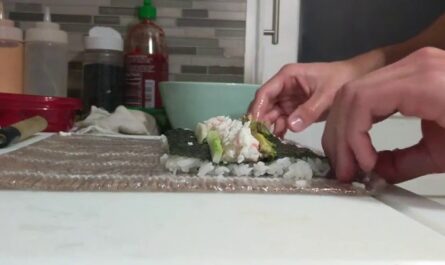If you’ve ever dined at a sushi restaurant or watched a sushi chef in action, you might have wondered about the distinctiveness of sushi knives compared to regular chef knives. These specialized tools are essential for creating the perfect sushi and are quite different from the all-purpose chef knives found in most kitchens.
In this article, we’ll explore the characteristics and functionalities of sushi knives, highlighting key differences that distinguish them from chef knives. By understanding these differences, sushi enthusiasts and culinary aficionados can appreciate the art of sushi-making even more.

Understanding Sushi Knives
Sushi knives are uniquely crafted tools designed specifically for preparing sushi. These knives have evolved to become an integral part of Japanese culinary tradition, reflecting a dedication to precision and craftsmanship.
Types of Sushi Knives
There are several types of sushi knives, each serving a specific purpose.
- Yanagi: Known as the sashimi knife, it’s designed for slicing raw fish.
- Deba: A heavy-duty knife used for cutting through fish bones.
- Usuba: A vegetable knife for creating delicate and intricate cuts.
The Material of Sushi Knives
Typically, sushi knives are made from high-carbon steel, which allows for an incredibly sharp edge. This material is crucial for slicing through raw fish with precision without damaging the delicate flesh.
Chef Knives: The Generalist in the Kitchen
Chef knives are versatile tools found in nearly every kitchen. Unlike sushi knives, chef knives are designed for a wide range of tasks, from chopping vegetables to slicing meats.
Types of Chef Knives
Chef knives come in various styles and sizes, including:
- German Chef Knives: Known for their durability and weight, suitable for a range of kitchen tasks.
- French Chef Knives: Generally thinner, providing more flexibility for precision cutting.
The Material of Chef Knives
Chef knives are typically made from stainless steel, offering a balance of sharpness and longevity. While they may not be as razor-sharp as sushi knives, they are more resistant to corrosion.
Comparing Blades: Sushi vs. Chef Knives
The blades of sushi knives and chef knives have significant differences.
The Edge
Sushi knives often have a single-bevel edge, allowing for precise cuts ideal for sashimi presentation, while chef knives generally have double-bevel edges for versatile usage.
The Length and Thickness
Sushi knives are typically longer and thinner, designed for smooth slicing motions. Chef knives are broader and shorter by comparison, facilitating chopping and dicing tasks.
Functionality
The functionality of these knives speaks to their design purpose.
Sushi Knives in Action
Sushi knives serve specific purposes, from filleting to garnishing, reflecting their role in producing aesthetically pleasing sushi plates.
Chef Knives in Action
Chef knives are the workhorses in the kitchen, handling everything from mincing garlic to butchering a chicken, demonstrating their versatility.
The Cultural Significance of Sushi Knives
Sushi knives hold an esteemed place in Japanese culture, symbolizing the culinary art form of sushi-making. They represent the dedication and skill required to prepare sushi to perfection.
For more on the cultural experience of sushi, explore guides such as this one, which provide insights into proper sushi dining etiquette.
Care and Maintenance
Caring for sushi and chef knives is a key part of their longevity.
Maintaining Sushi Knives
Sushi knives require regular honing and careful storage to maintain their ultra-sharp edges. Learn more about proper maintenance techniques at Bamboo Mats Care.
Maintaining Chef Knives
Chef knives need regular sharpening and can be maintained using a honing rod or whetstone. They are usually more forgiving in terms of maintenance compared to sushi knives.
FAQs
What makes sushi knives unique?
The precision and sharpness needed for preparing raw fish and delicately slicing vegetables make sushi knives unique.
Can I use a sushi knife for non-sushi tasks?
It’s possible, but not recommended as sushi knives are specifically designed for sushi preparation.
Are sushi knives more expensive than chef knives?
Generally, yes. The craftsmanship and materials involved in making high-quality sushi knives typically result in higher prices.

Conclusion
Understanding how sushi knives differ from chef knives gives us a deeper appreciation of the culinary art behind sushi. Both these types of knives hold their own place of importance, whether in the heart of a bustling restaurant kitchen or in an intimate home setting. By exploring more Traditional Equipment, you can gain further insights into the culinary journey surrounding sushi.
This article contains affiliate links. We may earn a commission at no extra cost to you.




